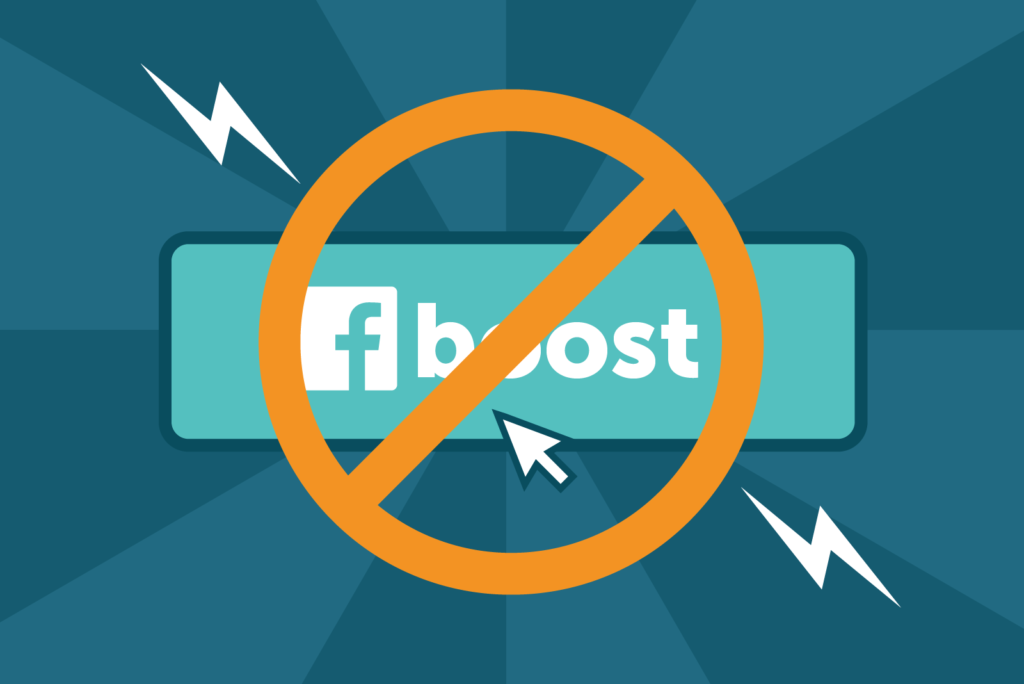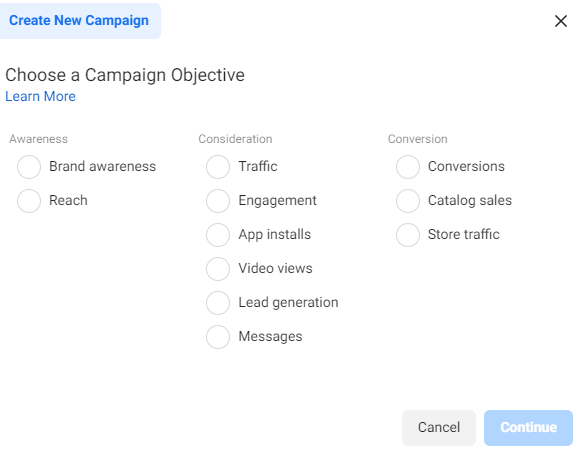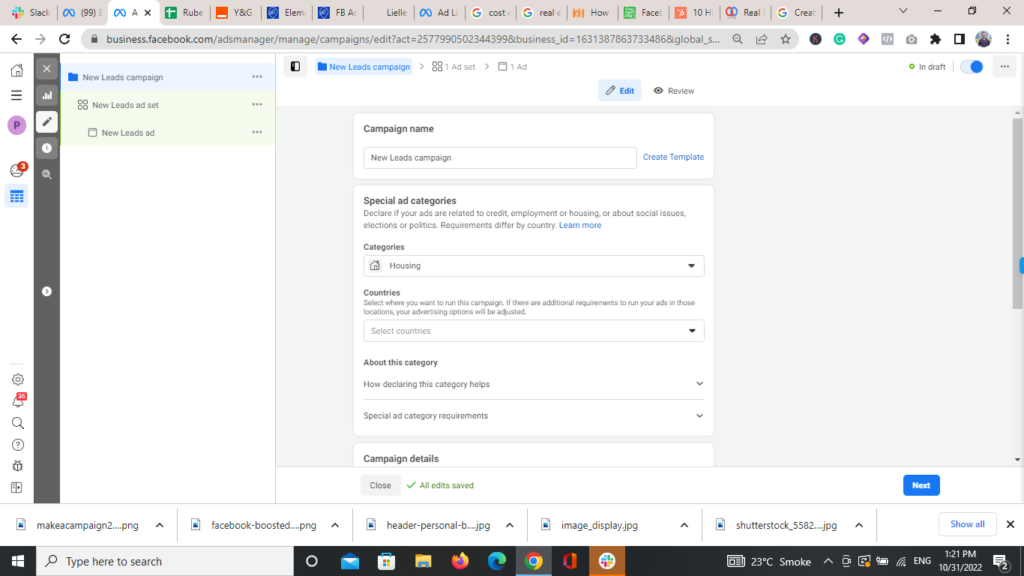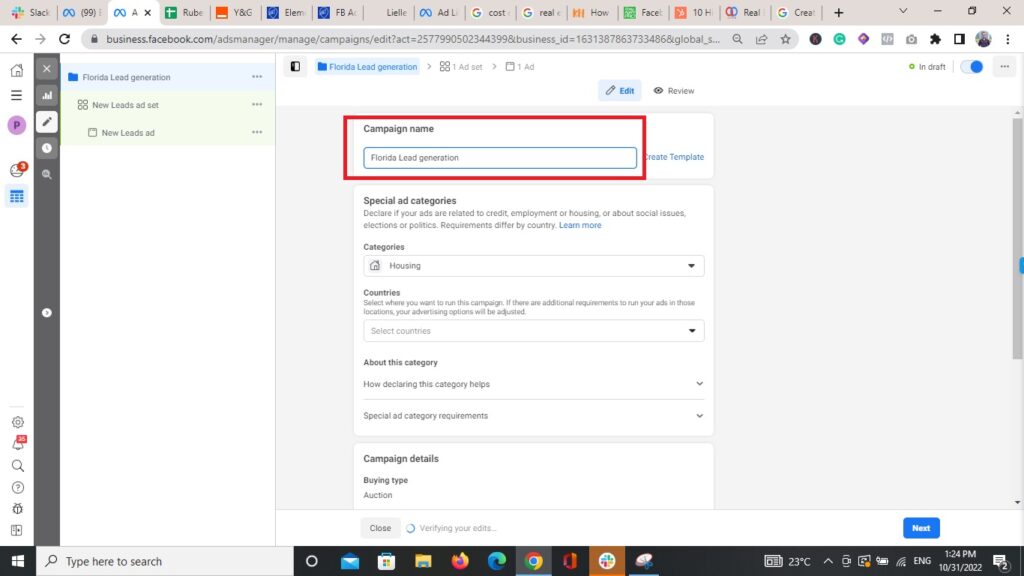You probably already have a Facebook Business Page, but are you running FB ads for real estate? A Facebook ad is one of the best cost-effective ways to discover and capture new leads on social media.
In this post, we’ll cover everything you need to know about which types of real estate ads are the most effective, as well as a step-by-step guide on how to set up your first ad campaign to get your ads in front of the right audience.
Types of FB Ads For real Estate To Create
Market a New Listing
If you or another agent in your office has a new listing, this makes excellent content for a Facebook lead ad.
In your ad, include a couple of paragraphs describing the key features of the listing that will capture peoples’ attention. For example, the number of rooms, any unique features, and whether it’s close to any parks or schools. Also, include three to five photos of the home.
In exchange for the leads’ information, give them the home’s price, the address, and more photos. Have your ad link to a landing page on your website, or use a Facebook lead form to keep everything within Facebook.
Custom List of Homes
The second best type of FB ads for real estate is lists of homes. For example, a custom list of homes under $300k or a custom list of homes with a pool.
Research your market to see what people are searching for, and then create a list around whatever is most popular. Again, you can link to a landing page on your website or use a Facebook lead form.
You can use an automated email to send the list to your leads, which is typically just a link to your Internet Data Exchange (IDX) website. Filter the IDX search results to display only what you are offering on your list, and then copy that link to the landing page on your website. Have the lead provide their contact information before you email them your list.
In these ads, make sure you use a relevant photo. So if you’re doing homes under $300k, be sure to use a photo of a home that is actually in this price point.


Types of FB Ads For Real Estate to Avoid
Free Home Evaluation
While these types of FB Ads for real estate used to be popular back in the day, they have lost their relevance now that people can easily get free home evaluations from Zillow and other real estate sites.
For this reason, these types of ads are not a good hook to draw in leads because they have no particular reason to choose you over a well-known service like Zillow. Zillow will give them immediate results, rather than them having to provide you with their information and waiting for an email from you.


Personal Branding Ad
A real estate ad where your personal branding is the main feature only works if you’re already an established agent, or willing to spend a lot on advertising to establish your brand.
Suppose your ad is simply a photo of yourself, your logo, and a description of your experience. In that case, it will not convince anyone to click on it unless they’ve already had previous experience with your brand.
Most ads like this don’t promise the lead anything in exchange for providing their information, which makes them ineffective. In addition, they are not ideal if you have a limited budget and are looking for more cost-effective options. However, personal branding is still important, and running ads can be an effective strategy down the road.


Using Boosted Posts
Boosting your posts is not a good strategy to get leads because it’s primarily a way to get more engagement. This means you will mostly get likes, comments, and shares but won’t get very many actual leads.
While Boosted Posts seems like a simple way to create an effective ad and get noticed, you won’t get anyone’s actual information. Boosting is more of a branding strategy and should only be considered when you’ve already established a solid lead generation ad campaign.


How to Set Up an Ad Campaign Step-by-Step
Now that you know what types of FB ads for real estate work best, we’ll go through a step-by-step tutorial on how to set up your first ad campaign.
1. Create a New Facebook Ad Campaign


Log in to your Facebook Ads Manager and go to the Campaigns section. If you already have campaigns, you will see them listed here. Click on the green “+ Create” to get started creating your new campaign.
2. Select Special Ad Categories
In 2019, Facebook introduced Special Ad Categories as part of its new Facebook Advertising Policies. Special Ad Categories is a way to prevent discrimination, and it changes the way users can target specific audiences.
FB ads for real estate related to housing fall under this category. All you need to do is select “Housing” from the drop-down menu underneath Special Ad Categories.


3. Name Your Campaign
Click the arrow on the right to open the drop-down menu to name your Facebook advertising campaign. Name it something simple, such as “Your City Lead Generation.” There’s no need to adjust the other settings. Click “Continue” to move on to the next page.


4. Create a New Audience
On the next page, select your Facebook Business Page and then scroll down to the Audience section. Select “Create New Audience” and then go down to the Locations subsection.
Input the city that you are targeting. Because of the Special Ad Category restriction, the smallest you can target is a 15-mile radius around your chosen real estate market.


6. Set Detailed Ad Targeting
Another restriction put in place from the Special Ads Category is that you cannot adjust the age or gender of your target audience. However, you can change the Detailed Targeting, which lets you target a custom audience based on their interests.
It also allows you to conduct split testing so that you can find which audience is more receptive to you.
For example, you can search for one audience interested in Zillow, another interested in Realtor.com, and then compare them to see which group responds better to your ad.


7. Choose Ad Placement
Next, choose your Placement. Manual placement is best. Otherwise, Facebook will select your ad placements for you and allocate your budget accordingly.
Facebook tends to spread your budget way too thin, because this is how the platform earns more money. When this happens, you are less likely to get any conversions.
This is why Manual Placement is better, so you can pick the desired allocation of your budget. When you select Manual Placements, leave it set on All Devices and select Facebook and Instagram as platforms.
Lastly, select where you want your ad to show up under Placements. Facebook News Feed, Instagram Feed, and Facebook Marketplace are the three best options for the highest conversions. If any other options are automatically selected, you should deselect them so that you can keep your split testing simple.
8. Choose Your Budget
Under the Budget subheading, select Daily Budget from the drop-down menu and start with at least ten dollars per day. Facebook will warn you that you won’t get any leads with this amount, but you can disregard this.
Facebook profits when you spend more money, so they will encourage you to increase your spending. However, ten dollars is plenty to get you new leads when you’re just starting. With that being said, if you can afford to go up to fifteen or twenty dollars, that is even better.
Another method is to spend fifteen dollars a day on new leads, and five dollars a day on Facebook retargeting ads.
After your budget, the next step is to choose a schedule to control your ad spend. If this is your first campaign, be sure to select an end date so you can keep track of how long your campaign is running. If you don’t, your campaign will keep running and you’ll be spending money without knowing what’s actually working.
A good idea is to select a week-long run date. This way, you can analyze your FB ads for real estate to see if they are running successfully and which audiences are giving you better results.
If you have an ad that isn’t working, you can replace it with a new one. Once you’ve selected your schedule, hit Continue to move on to the next page.
9. Choose the Image and Type of Ad
On the next page, you’ll be asked to pick the ad format. There are several different ad types. You can choose from a single image, video ad, or carousel ad. Any option is fine, and you can experiment with multiple real estate Facebook ads to see what works best.
You’ll also have to upload your ad photo. The most important tip to keep in mind is choosing a high-quality image of the property. If you are using a stock photo, make sure it’s of a property within the same price range as the one you are advertising.
10. Fill Out the Ad Text
After you’ve chosen an image, head to the Text & Links Heading and begin typing your ad’s message in the Primary Text box. Keep it short, and use language and emojis to draw peoples’ attention.
Then, under the Headline box type a short headline summarizing your main message. You will see a preview of what your ad will look like on the right-hand side of the screen.
Lastly, choose a Call to Action for your audience. The best one is Learn More, which encourages your audience to navigate to a landing page on your website where they can learn more about your brand.
11. Create a New Lead Form
Next, scroll down to the Instant Form section and click “+ New Form.” In the box that appears, create a name for your form. A good idea is your city and the subject of your ad. For example, “San Antonio Under $300k.” Under Form Type, choose the More Volume option and turn off the optional Intro button.
12. Choose Information to Capture
Next, you will choose what questions to ask your leads in the lead capture form. Keep it short and simple. Otherwise, they may not commit to taking the time to fill it out. Focus on just a few categories: name, email, and phone number. Also, make sure you add your privacy policy.
13. Thank You Message


14. Link to the Right Site
You need to be sure that you know exactly where you’re sending your leads. To create an accurate link, start by visiting your website. If you’re with eXp Realty, this will be your kvCORE site.
Search on your site for the homes you want to include in your list. In this case, since you promised your leads a list of homes under $300k, search for single-family homes in your area with a minimum price of $200k and a maximum price of $300k.
15. Search Your Website
In kvCORE, this will take you to a map that will show you all the available homes, filtered by the most popular. Take the link to this page and add it to your Facebook ad.
16. Publish Your Ad
After you input the correct link in the Link box, simply hit Publish and your ad campaign will begin.
21. Automation
As your FB ads for real estate start capturing leads, you have to find a way to automatically import those leads into your CRM database so that you can successfully follow up with them.
In order to have the most success with brand new leads, you need to follow up with a phone call within five to ten minutes.
Because Facebook does not notify you when you get new leads, you’ll have to find a way to create notifications yourself. You can do this by using a third-party system, such as Zapier, that will automatically take your leads from Facebook and bring them to your CRM system.
When you get your leads into your CRM system, you can then follow up with a phone call and put them on automated drip email campaigns. However, make sure you don’t just rely on automated emails. Phone calls will get you more success, especially with brand new leads.
Final Thoughts on FB Ads For Real Estate
FB Ads For real estate are an essential lead generation strategy for your real estate business. If you take the time to learn how to set up a successful ad campaign with effective ads, you’ll be bringing in hundreds of leads in no time.
Have you worked with Facebook advertising before? If so, what kinds of ads did you run? Let me know in the comments below. I’d love to hear all about your experience!

Hmm it seems like your site ate my first comment (it was super long) so I guess I’ll just sum it up what I wrote and say, I’m thoroughly enjoying
your blog. I too am an aspiring blog blogger
but I’m still new to the whole thing. Do you have any recommendations for beginner blog writers?
I’d really appreciate it.